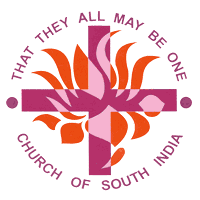Our History
All Saints Church was constructed in 1860 AD to serve the British Cantonment of Secunderabad. The church was the first permanent structure in the Trimulgherry Entrenchment.
This beautiful Church, a fine representation of Gothic architecture nestles in the heart of the Cantonment amidst serene, secluded and picturesque surroundings away from the din and dust of the city.
The history goes back to the time when the British were still trying to get a foot hold in Hyderabad.
The British resident with a strong contingent of troops took permanent residence of Bolarum to ensure the loyalty of the Nizam of Hyderabad soon after India’s First War of Independence in 1857. The Britishers, civilians and soldiers who were thousands of miles away from home and living amidst strange people in an alien land harried by sudden death, unknown ailments and no certainty of returning to their homeland felt the need for a place of public, corporate worship and spiritual sustenance. They raised funds by subscription and bult the All Saints’ Church Complex, which consecrated by Bishop Gill in 1860.
As the magnificent monument has come up with the love, hard work and subscriptions many a faithful came forward with gifts and furnishings. The earliest and perhaps the loveliest is the stained glass windows at the test, depicting Jesus carrying Red Cross to Calvary and Inscribed “to the loving memory of Edward Fredrick Dawson, Lieutenant, Royal Artillery, by his mother in 1884”. The rich colouring predominantly red glow with fiery warmth when the early morning sunlight seeps through it. The rose window above the choir stalls portraying the story of the Good Samaritan was given by a few friends in memory of Miss. H.C. Bailey, Lady Superintendent, Civil Hospital, Secunderabad and faith member of the choir for many years on November 8, 1911.
The exquisitely carved lectern was presented by the 2nd Bn. The Bedordshire and Hertfordshire Regiment in 1919-1922. The brass lectern for the altar was given in memory of those of L Battery, who died in 1923. A Book of Altar Services: was a joint gift from the 80th and 98th Batteries in 1928 and 1929. A silver box for altar breads is in memory of Rose Bailey, presented on December 9, 1927. There is a very fine brass alms dish with the simple inscription “A Thanks Offering”.
The All Saints’ Church with its complements and adjuncts was known as the Garrison Chaplaincy of All Saints. The Holy Trinity Church, Bolarum, The George’s Chapel, Ammuguda, and the Wesley Garrison Chapel, Ammuguda and the Wesley Garrison Church, Trimulgherry were placed under the overseeing care. Military cemeteries numbering seven scattered over the
Contonment were also under her charge. The Biship Whitehead’s Soldiers Institute was administed by this Church and the Roman Catholic Church was subject to her authority.
Two manual pipe organ the largest in the Diocese of Medak and a baby organ were also gifts.
All the Garrison Chaplains were on the payrolls of the Army holding commissioned ranks. The Church and the grounds were maintained by the MES. The Chaplaincy was directly placed under the Ecclesiastical Department of the erstwhile Government of India (British Empire).
There are 16 memorial tablets placed along the walls of the North and South aisles and on the south transept. These are the evidence to the sad, tragic tale of sudden and untimely deaths.
During the early post Independence Period, the Church passed through crucial times. The first Indian Army Chaplain was the Rev. V. B. Paranjothi. He was followed by Rev. S. Christudas and Rev. J.P. Cotelingam. Soon after Independence, the MES cesased to maintain the Church and in 1956, the post of Army Chaplain was abolished. The burden of maintaining the Church fell upon the slender shoulders of a few Indian civilians who formed the core of the floating congregation. Smitten by decimated membership and attenuated financial resouces the Chaplaincy of All Saints was dismembered in 1952. The all Saints’ Church was placed the wing of the St. Thomas (SPG) Church, Secunderabad. At this juncture, the Church was exposed to the period of being taken over for secular use, but by the providence of God, she escaped this tragic fate, the Church doors were kept open and the ministry though maimed and limping continued uninterrupted.
Again in January 1966, constrained by untenable circumstances, the Garrison Wesley Church and All Saints Church were amalgamated into one pastorate but continued to retain their separate identify. The arrangement gave rise to a host of problems. Encouraged by the zeal and liberal giving of the members of the congregation, the elders of the Church trusting in the towering strength and unfailing guidance of God, strained every nerve to build up the Church into an independent pastorate. Rev. Doraising James, whom they sponsored for ordination, proved a Godsend. By his incessant efforts and indefatigable labour, the membership was built up into a viable congregation. On August 1, 1978, the then Bishop in Medak, the Rt. Rev. B.G. Prasada Rao declared the All Saints Church as an independent pastorate.
Under the stewardship of Rev. Doraising James, the pastorate made headway in every direction and undertook extension ministry at Malkaram and Yapral village. Rev. Justus Moni assumed charge as Priest-In-Charge who was very keen to develop the pastorate.








